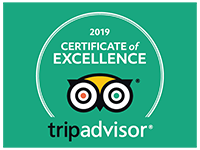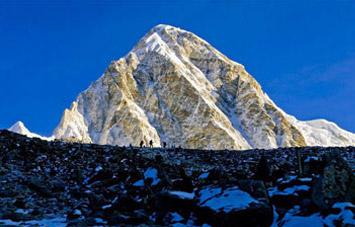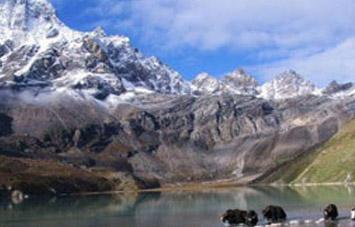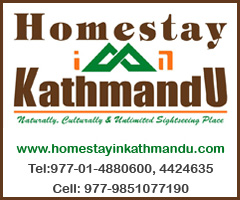Everest Expedition
Overview
Trip Information
Adventure Pilgrims Trekking offer world's highest peak climbing Everest Expedition, the greatest challenge, is more than the famous mountain on earth. It has unique beauty, mystery and mood. Successful historical Mt. Everest Expeditions leaves one with the sense of most proud and adventurous person on Earth. Mt. Everest's local names give you a sense of how the mountain commands respect from all who see her. Standing incredibly tall silhouetted against the shared sky of Nepal and Tibet, thisMountain has many names Chomolungma, Sagarmatha, Whichever name one chooses, its vagueness still lives on. Most of the mountaineers have their dream to reach the summit of Everest in their life time.
Adventure Pilgrims Trekking have always been fascinated by what is also called "The Third Pole." late Sir Edmund Hillary and Tenzing Norgay Sherpa became the first persons to stand on top of the world on 29 May 1953. Since then there have been other many notable ascents to the summit. Possibly the most colorful story about the early attempts on Everest is the one involving Captain J. Noel and his native companions. He disguised himself as a Mohammaden and made a journey from Darjeeling through Northwest Sikkim and round the north of Kanchanjunga in an attempt to reach Everest. Unfortunately, not even the disguise could see him through. His mission was out short just sixty-five km from Everest when a posse of Tibetan soldiers forced them to turn back. Although there are a dozen or so routes on Mt. Everest we follow the classical route, traditionally the most reliable way to the summit. Climbing Everest expedition has been successfully organized and climbed many times since then, but this should not lull prospective Everest climbers into complacency. Everest is a deadly mountain. Nothing this, one cannot approach the mountain with anything but a serious determination and focused mountaineering attitude. Everest is still as inexplicable, beguiling and magnificent as ever.
Mount Everest has two main climbing routes, the southeast ridge from Nepal and the northeast ridge from Tibet (China), as well as many others less frequently climbed routes. Of the two main routes, the southeast ridge is technically easier and is the more frequently-used route. It was the route used by Hillary and Tenzing in 1953 and the first recognized of fifteen routes to the top by 1996.
Camp 1 : 6400m. – 20000ft.
Camp 1 is situated at the flat area of snow endless snow deep crevasses and mountain walls. Because of the Sun's reflection from this place we get warm and hitting Ambience at this place. In the night we listen the deep murmuring cracking sounds of crevasses beneath our tent. These are the areas where we have to walk to reach camp 2.
Camp 2 : 6750m. – 21000ft.
Camp 2 is situated at the height of 6750m. – 21000ft. It is located at the foot of the icy mount Lhotse wall though where we have to go ahead. Hear bad clouds roll-in from the low range of the Himalayan valleys to the bottom of our camp 2. Some time wind here seems very violent enough to destroy the tents. After climbing these palaces we reach camp 3.
Camp 3 : 7100m. – 22300ft.
Camp 3 is located at the height of 7100m. – 22300ft, adjoining to mount Lhotse wall. After climbing 4000ft. Lhotse wall by using fixed rope and with prior acclimatization it leads us to camp IV. Also on the way we have to ascend the steep allow bands (lose, down -slopping and rotten limestone). From their crossing short snowfield the route moves ahead up the Geneva Spur to the east before finishing the flats of the south col. (Another wells name meaning Saddle of pass). Oxygen should probably be use above base camp III Incase of needed.
Camp 4 : 8400m. – 26000ft.
Camp 4 is located at height of 8400m. – 26000ft. It is the last camp of the Expedition. From here summit is only about 500 m distance far. This is the final and dangerous part of the climbing. This place is besieged by ferocious and violent winds. The normal best way to reach to summit is via the narrow South - East Ridge and it precedes the South Summits 28710ft.
Detail Itinerary
Day 01 : Arrival in Kathmandu airport, meet our staff then transfer to Hotel.
Day 02 : Preparation for Expedition.
Day 03: Official work for expedition and briefing at Ministry of Tourism.
Day 04 : Fly to Lukla 2860m. then trek to Phakding 2622m., Manjo.
Day 05 : Trek to Namche Bazar (3340m, 10959ft).
Day 06 : Trek to Khumjung (3790m, 12435ft), called the Green Valley.
Day 07 : Trek to Tengboche Monastery (3837m, 12589ft).
Day 08 : Trek to Dingboche (4343m, 14249ft).
Day 09 : Trek to Lobuche (4915m, 16126ft).
Day 10 : Acclimatization / Rest day in Lobuche
Day 11 : Trek to Everest Base Camp. (5380m, 17652ft).
Day 12-50 : Climbing Period on Mt. Everest.
Day 51 : Base Camp Clean Up
Day 52 : Trek to Pheriche. Overnight in lodge.
Day 53 : Trek to Namche Bazar. Overnight in lodge.
Day 54 : Trek to Lukla and transfer to Teahouse Lodge
Day 55 : Flight back to Kathmandu then transfer to Hotel.
Day 56 : Free in Kathmandu.
Day 57 : Free in Kathmandu.
Day 58 : Last minute, transfer to airport for your onward journey.
* private group or individual, please e-mail us at govindapanta@gamil.com. to know the details of expedition.
What's Included
Included in the Cost
- All land transportation by Car, Van, Hiace or, tourist Bus (Airport/Hotel/Airport, expedition pick up and drop).
- 6 Nights Hotel accommodations in Kathmandu on Bed and Breakfast plan (before and after expedition).
- Schedule flight KTM/Lukla/KTM for member, Liaison officer and Expedition staffs.
- Transport of food supply and expedition equipments to Base Camp and back.
- Full board in lodges during trekking to base camp and back.
- Base Camp single sleeping tent and Mattress for each member, BC staffs and Liaison officer.
- All kitchen tent, store tent, dining tents, toilet tent, table, chairs and cooking utensils for BC.
- Food and fuel at Base Camp.
- Service of Government Liaison officer.
- Service of cook and kitchen boy at Base Camp.
- Equipments allowance, daily wages of cook, kitchen boys and Liaison officer.
- Insurance of cook, kitchen boy, Liaison officer and porters.
- Expedition Permit fee of Mt. Everest.
- Khumbu Ice Fall route fee.
- Sagarmatha National Park entrance fee.
- Per Person 70 KG. Expedition equipment’s luggage or, barrels allowed for expedition till Base Camp.
- Per Person 50 KG. Expedition equipment’s luggage or, barrels is allowed for returned to Kathmandu.
- 2 Expedition Barrel or, Duffel bag for each member.
- Generator or Solar panel at Base Camp for light and charging.
- Sat Phone available at Base Camp, but nominal charge for use.
- Emergency medical oxygen at Base Camp.
- Visa extension fee.
- Agency service charge.
Not Included in the Cost
- International airfare from/to your country.
- Nepal entry visa fee (can be obtained at the airport at upon arrival).
- Lunch and dinner during your stay in Kathmandu.
- Hotel after 6 night stay in Kathmandu. Itinerary A
- Hotel after 5 night stay in Kathmandu. Itinerary B
- Personal climbing gear and equipment above Base Camp.
- High Tents above Base Camp.
- High altitude food and fuel above Base Camp.
- Oxygen bottles with mask and regulator-Poisk Oxygen System (available on request).
- Personal insurance such as travel, accident, medical, emergency evacuation and lost luggage.
- Applicable permit fees and customs charges, etc. for SAT phone, Walkie Talkie set and services.
- Communication equipment and commercial filming.
- International airport departure tax at Kathmandu Airport.
- Expenses of personal nature such as drinks, laundry, postage, telephone etc.
- Tips and bonuses.
- Garbage deposit.
Trip Fact
- Duration: 58 Day(s)
- Trip grade: Adventure
- Activities: Expedition
- Group size: Min 4
SIMILAR TRIPS
People who viewed this tour also like...

















